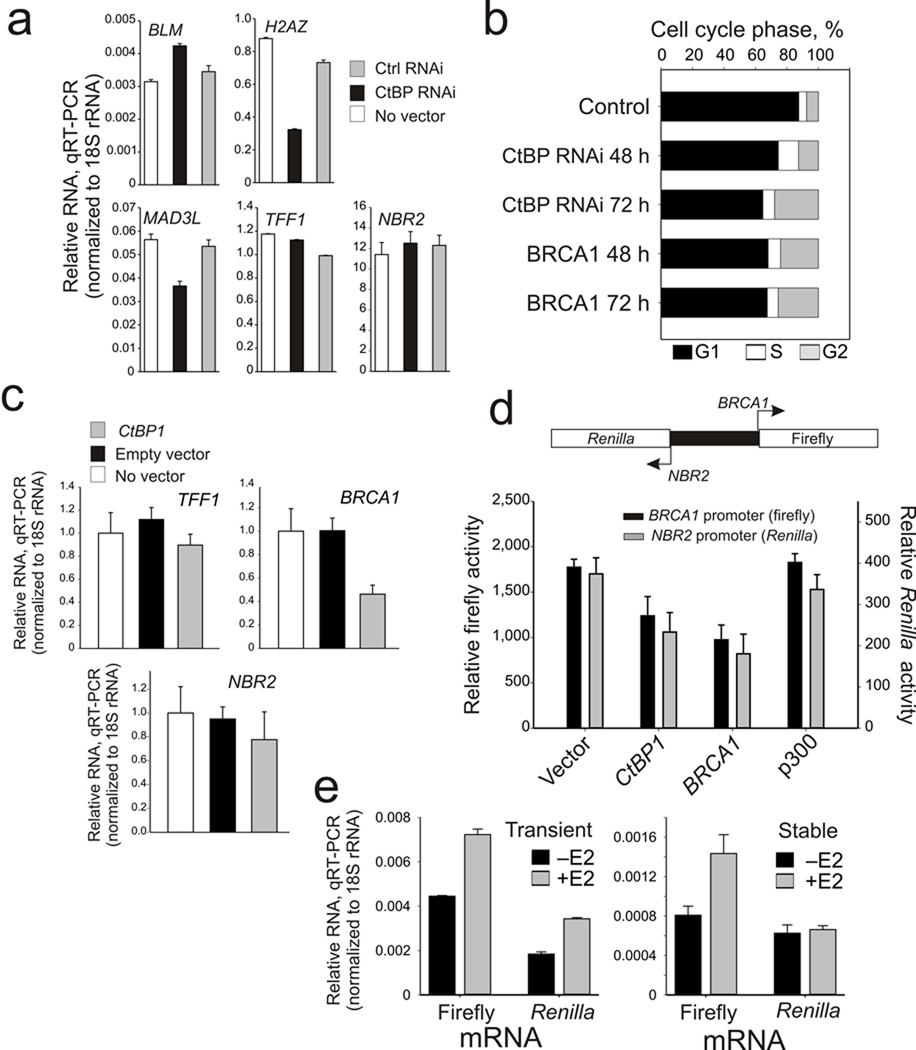Figure 4.
CtBP control of BRCA1 is gene specific, functionally influences cell cycle progression and is chromatin dependent. (a) mRNA levels of BLM, H2AZ, MAD3L, TFF1, and NBR2 in control and CtBP depleted MCF-7 cells. Error bars represent the s.e.m. for N=3 biological replicates. (b) Cell cycle profiles (percent distribution in G1, S, and G2/M phases) of MCF-7 cells depleted of CtBP for 48 h and 72 h, or over-expressing BRCA1 for 48 h and 72 h. (c) mRNA profiles of TFF1, BRCA1 and NBR2 in control MCF-7 or cells 48 h after transfection with empty vector or CtBP1 expressing plasmids. Error bars represent the s.e.m. for N=3 independent biological replicates. (d) Upper panel: schematic diagram of the dual NBR2/BRCA1 promoter reporter. Lower panel: Firefly and Renilla luciferase activity profiles of MCF-7 cells co-transfected with the dual NBR2/BRCA1 luciferase reporter and either control or vectors expressing CtBP1, BRCA1 or p300. (e) Firefly and Renilla luciferase mRNA levels in MCF-7 cells expressing a transiently (left) or stably integrated (right) BRCA1 bi-directional firefly/Renilla luciferase reporter after 24 h stimulation with estrogen. Error bars represent the s.e.m. for N=2 biological replicates.

